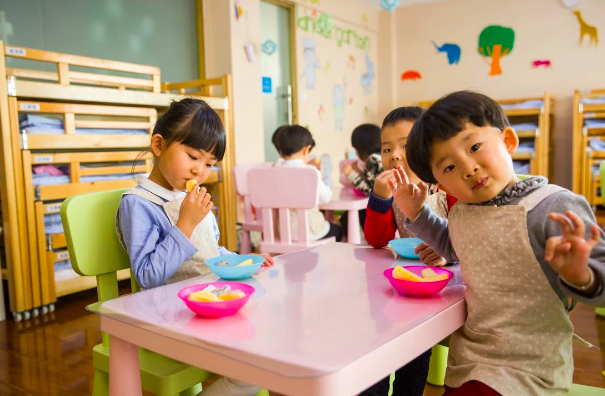You can only imagine how magical it is for parents to see their children grow up right in front of their eyes. It’s amazing how fast kids grow up.
Only a few months ago, they were babies, and now they’re toddlers and heading to preschool. But before you send them off to preschool, make sure they attend daycare to get adjusted to spending time away from you in the company of other kids.
Nevertheless, parents often feel afraid about sending their children to daycare. After all, you are finally letting them step into the world on their own where your little angel has to learn the ways of the world.
However, while many parents may feel uneasy about sending their children to daycare, the benefits far outweigh the imagined risks.
A daycare program prepares your child for school, to get oriented with spending time away from parents, meeting new people, and having the staff at the daycare guide and take care of them.
The following tips will help ease your children’s transition.
Prepare in Advance
The best thing you can do as a parent is to look for a daycare center that meets your child’s needs. Taking your child’s needs into consideration is particularly important for parents who are raising children with special conditions.
For instance, if by any chance your child was a birth injury victim and suffers from Erb’s palsy, looking for a daycare center that provides care for such children should be your top-most priority.
You can file a claim for your child’s treatment expenses through an Erbs palsy lawyer, ensuring that they get the treatment they deserve. So, choose a daycare center that provides specialized care.
The concept of a daycare doesn’t really appeal to the kids. Therefore, prepare them by talking to them about it. Also, give a hint that you’ll be separated for a few hours. However, let them know that you will return after a short period of time.
But reassurance alone isn’t always enough. The first step to helping your child adjust is for you to adjust first. If you’re anxious or worried, children can sense your mood and they might not be accepting of the change.
Since you are their safe space, they look to you for examples of how to respond to anything and everyone. Therefore, if you are hesitant about sending your child to daycare, there is a high likelihood that your child will not be able to cope.
Get Acquainted with the Teacher
It is important to trust the teacher. In the course of their careers, they have probably been exposed to many different situations and scenarios.
If you are worried that they may have adjustment issues, are slow learners, or may be resistant to change, let them know beforehand. Teachers can prepare a special toy or an activity for students with separation anxiety conditions.
By knowing or being familiar with your child’s habits, the daycare can arrange an arrival routine or setup that makes drop-offs less stressful and exhausting.
In some cases, teachers prepare ‘scripts’ to shorten the goodbyes between parents and children. They help parents move past the tears and ‘I love yous’ and allow them to separate on good terms.
Visit the Daycare
Visiting the daycare before you put your child there is important. Better yet, take your child with you. During your visitation, your child can get to know the surroundings and caregivers or teachers.
As a result, you won’t have to worry as much about the emotional load of dropping off. In a familiar environment or with friendly people, kids are more likely to stay content without much persuasion or reassurance.
Let your child explore the daycare for herself.
Trial Run
Trying out the daycare first is always a good idea, no matter how strange it may sound. This should be the trial run.
For the trial run, you can drop-off your child and come get them after an hour. Make sure you ask them what they need. Pay attention to how they react, what they ask for, or what helps them calm down. Plan accordingly based on your child’s initial reactions.
Favorite Toys
Kids, universally, have a preference when it comes to their special toys. Their attachment to toys extends to other things as well that may not be even toys. Sometimes kids have a special blanket or pillow that they like. Allow them to bring it along. It is beneficial for a child’s emotional well-being to have a familiar object in an unfamiliar environment.
Slow but Steady
Introduce your child to the transitioning into daycare gradually. Set a sleeping and waking routine at home. Try sending your child for half a day for the first few days, so they won’t feel overwhelmed. Setting a routine at home can significantly help your child.
Bonding
You should set aside time for them in the evening, since they’ll be at daycare in the mornings and afternoons. Take time to listen to them talk about their day, hug them, and show them how much you care for them.
Final Words
Kids aren’t always going to be the little bundles of warmth that always will need you to be around. Arrange for their needs and let them know that you’re there for them. You may find it heartbreaking to send your child away, but it is an inevitable transition in life. Your best course of action is to mentally and emotionally prepare yourself for it. Let the child slowly but steadily transition into daycare, so it learns to be independent.
































